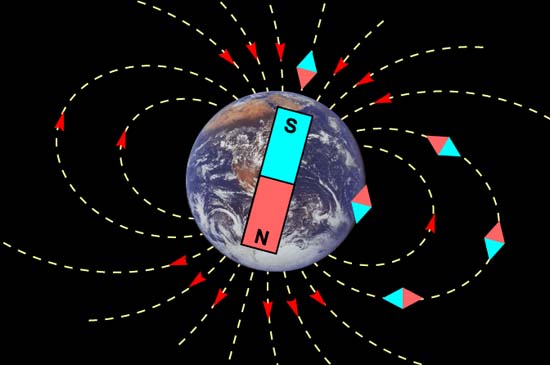The pole from the North is moving to Russia
The movement of the pole from the North is causing serious problems for aviation, maritime and wildlife.
A seemingly extraordinary thing is happening in reality: The North Pole is moving at a rapid pace unprecedented in human history , threatening everything from air and maritime traffic to journeys. migration of wild birds.
Geologists say that the pole from the North (different from the North) is always moving due to the change in the inner core of the globe. People first identified polarity from the North in 1831, and after nearly a century of stability on Ellesmere Island (Canada), it began to move northeast with a speed of 14.4 km / year. This speed suddenly increased gradually in 1989, and currently from North is directing to Siberia (Russia) at about 64 km / year, according to Geological Survey Geologist Jeffrey Love in Colorado . According to National Geographic quoted Joe Stoner of Oregon State University, the north pole has moved more than 1,100 km in the last century.

Earth is like a giant magnet with two North-South magnetic poles - Photo: Nat Geo
Given this situation, there is speculation that the magnetic field is preparing to change its polarity, causing the compass to point south, not north, which only happens 3 to 7 times a million years. This phenomenon is creating a real problem in the field of civil aviation. The current movement of the pole from North to Ellesmere is making the compass deviate by 1 degree every five years, forcing the US Federal Aviation Administration (FAA) to change runways across the country during this time. For example, Tampa International Airport in Florida (USA) has just spent 1 month changing 3 runways to avoid the possibility of an aircraft being mistakenly transferred to another airport because of coordinates. Other US airports are also facing the same situation. Yet, despite the increased costs and unprecedented inconvenience of having to adjust the runway in North America, not to mention the loss of extreme polarity from the North to the hands of Russians, North American residents would probably be less frightened sometimes they will have more opportunities to witness the mysterious colors of aurora.
The GPS navigation system, which relies entirely on satellites on Earth orbit, has long replaced the compass as a guideline for professional positioning activities. However, the compass still exists and is widely used in mountain climbers or amateur adventurers. At some locations, such as underwater or underground, far from the reach of satellite signals, the compass is still the only option. The oil industry, using magnets to calculate oil drilling points, needs to know the exact position of the pole from the North to work. That's not to mention the polarity phenomenon can affect life in nature. Birds always fly south to avoid winter, along with creatures that often migrate in the ocean, possibly falling into turmoil. Animals such as whales and sea turtles in the future may need to adjust their migratory instincts if they don't want to go astray.
No one can predict the impact of extreme transition since the last extreme change was 780,000 years ago, the longest stable period within 5 million years. However, experts say there is nothing to worry about because the process is very slow, and sooner or later people will find a way to deal with this unusual change.
- The pole from the North of the Earth is ... shifting
- The north pole from the Earth is moving
- The winter is prolonged due to the North Pole spiral moving
- Canada started drawing seabed maps around the North Pole
- How does the compass tell us where the North pole is at the South Pole?
- The Earth core pushes from the North to 60 km per year
- Video: Earth has 3 north poles
- Why did the North Pole move toward London?
- Marvel at unexpected discoveries about the North Pole
- The solar field is about to turn polar
- Detection of compressed air hot spots on the north pole of Saturn
- Arctic night frozen -15 degrees C is unbelievably beautiful
 Van Allen's belt and evidence that the Apollo 11 mission to the Moon was myth
Van Allen's belt and evidence that the Apollo 11 mission to the Moon was myth The levels of civilization in the universe (Kardashev scale)
The levels of civilization in the universe (Kardashev scale) Today Mars, the sun and the Earth are aligned
Today Mars, the sun and the Earth are aligned The Amazon owner announced a secret plan to build a space base for thousands of people
The Amazon owner announced a secret plan to build a space base for thousands of people